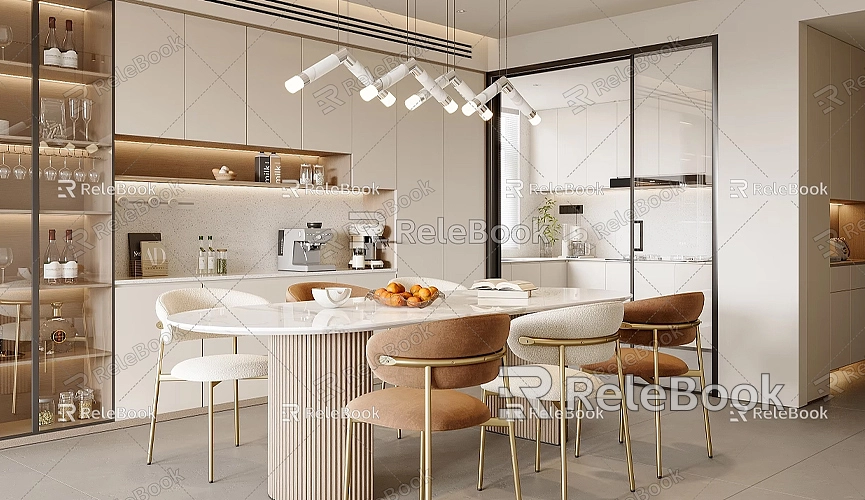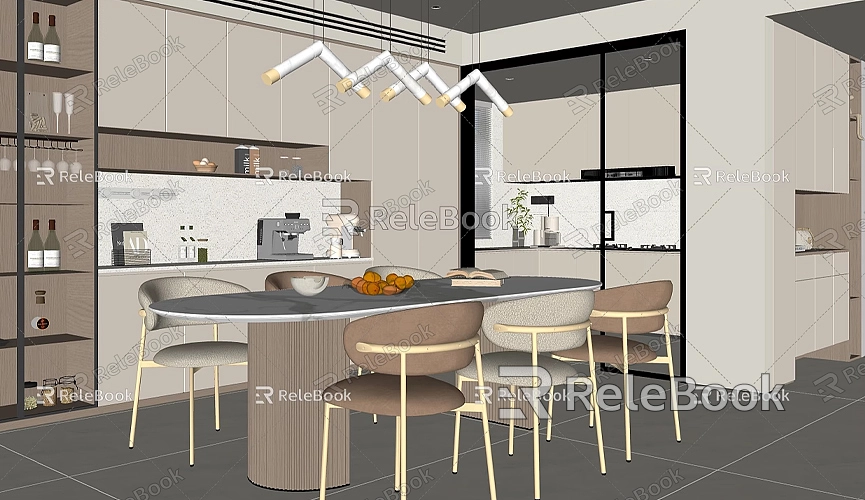How to build real furniture based from sketchup 3d model
In the process of furniture design and manufacturing, SketchUp is an incredibly useful 3D modeling tool. It helps designers turn concepts into visual models and, furthermore, enables furniture makers to directly translate those designs into real products. This article will detail how to use SketchUp's 3D models to create actual furniture, helping you seamlessly connect design with production.
Why Choose SketchUp for Furniture Design
Whether you are a professional designer or a DIY enthusiast, SketchUp can be your reliable partner for designing furniture. Its interface is simple and intuitive, with a relatively gentle learning curve, allowing those without 3D modeling experience to get up to speed quickly. With SketchUp, you can simulate the appearance, structure, and dimensions of furniture on your computer, allowing you to identify design issues in advance and avoid unnecessary complications during production.
Additionally, SketchUp’s 3D models can be easily exported to other software, such as AutoCAD, for further technical processing. These features make SketchUp the preferred tool for many furniture design and manufacturing companies.

From SketchUp Models to Real Furniture
Creating the Basic Model
First, you need to create a complete furniture model in SketchUp. For example, if you want to design a desk, you can start with the basic shape of the tabletop. Use the "Rectangle" tool to outline the tabletop and then use the "Push/Pull" tool to extrude it to your desired thickness. Next, outline the positions of the legs and use the same method to pull them up from the flat surface to a 3D form. The entire process is akin to building with virtual blocks, making it intuitive and flexible.
Refining the Design and Adding Details
Once the basic model is complete, you can start adding more details, such as drawers, handles, and decorative elements. These details not only determine the appearance of the furniture but also affect the overall user experience. In SketchUp, there are many tools to assist you with this, such as the "Offset" tool for quickly creating borders and the "Arc" tool for drawing curved structures—both of which are commonly used techniques in furniture design.
Using Components and Groups
The component and group functions in SketchUp are powerful tools that can help you manage your model more efficiently. For example, if you're designing a table with multiple identical legs, you can create one leg as a component and then copy it for the other three. This not only ensures consistency across all legs but also allows for easy updates later; modifying one component will automatically update the others.
Applying Materials and Textures to Simulate Realism
To make the model appear more realistic, you can add materials and textures to the furniture model in SketchUp. The software comes with many common materials, such as wood, metal, and glass, that you can directly apply to the model's surface. With the material editor, you can also adjust the scale and orientation of textures to better fit your design needs.
If you need higher-quality materials and textures or want to simulate more realistic lighting effects, you can download resources from external libraries. For high-quality 3D textures and HDRI, you can visit [https://textures.relebook.com](https://textures.relebook.com) for free downloads. If you need exquisite 3D models, check out [https://3dmodels.relebook.com](https://3dmodels.relebook.com). Relebook offers a wide range of high-quality 3D resources. High-quality textures can enhance the appeal of your design and provide clients with a more realistic presentation.

Producing Real Furniture: From Model to Product
Exporting the Model as Technical Drawings
Once your design in SketchUp is complete, the next step is to convert the 3D model into technical drawings that can be used for production. SketchUp can export 3D models as 2D plans, making them easier to use during manufacturing. You can choose to export the model in formats such as DXF or DWG, which can be opened in professional drafting software like AutoCAD for further detailing and annotation.
Technical Details and Material Selection
In the technical drawings, it's essential to clearly label the dimensions, materials, and connection methods for each part. For instance, whether the joints between the legs and tabletop will use a mortise-and-tenon joint or screws needs to be specified. The choice of materials is also critical—types of wood, thickness, and texture direction all directly impact the final quality of the furniture.
Additionally, if your designed furniture includes complex curves or special decorative elements, consider breaking these parts down and drawing detail views separately. This not only facilitates processing but also ensures the quality and consistency of the final product.
Cutting and Assembly
Once all the drawings are prepared, you can proceed with cutting and assembling the materials. Modern furniture manufacturing often uses CNC machines for precise material processing, which is both accurate and efficient. When using CNC machining, you can convert the SketchUp 3D model files into formats recognized by the CNC equipment for seamless integration.
If automated equipment isn't available, you can print the technical drawings and cut and assemble manually. During this process, pay close attention to how each part connects and the order of assembly to ensure the final furniture is sturdy and visually appealing.
Considerations in Real Furniture Production
Ensuring Structural Stability
During the transition from a 3D model to an actual product, paying attention to structural stability is crucial. For instance, when designing a cabinet, consider the load-bearing capacity of the drawers, the opening mechanism of the doors, and whether the supporting structure is sufficiently stable. These factors should be thoroughly simulated and validated in SketchUp.
Maintaining Design Consistency
If you find any design flaws during production, you can go back to the SketchUp model for modifications. Utilizing the component and group features allows for quick adjustments to the sizes and positions of various parts, ensuring coherence and aesthetics throughout the design.
Choosing Eco-Friendly Materials
With growing environmental awareness, selecting eco-friendly materials in furniture production is increasingly important. Opt for non-toxic, sustainable materials, such as reclaimed wood or environmentally friendly finishes, to protect the environment and enhance the product's value.
Using SketchUp 3D models to produce real furniture can streamline the entire process from design to finished product. Whether it’s basic modeling, detail work, or final production, SketchUp provides robust support. By effectively utilizing the various tools and features in SketchUp, you can identify design shortcomings in advance and make quick adjustments, thus avoiding many issues during actual production.
Finally, if you need high-quality 3D textures and HDRI for your models and virtual scenes, remember to visit [https://textures.relebook.com](https://textures.relebook.com) for free downloads. For exquisite 3D models, check out [https://3dmodels.relebook.com](https://3dmodels.relebook.com). Relebook offers a wealth of premium 3D resources that can help you more accurately simulate real-world effects during modeling and enhance the aesthetics and functionality of the finished furniture. We hope this article assists every furniture design and production enthusiast.

